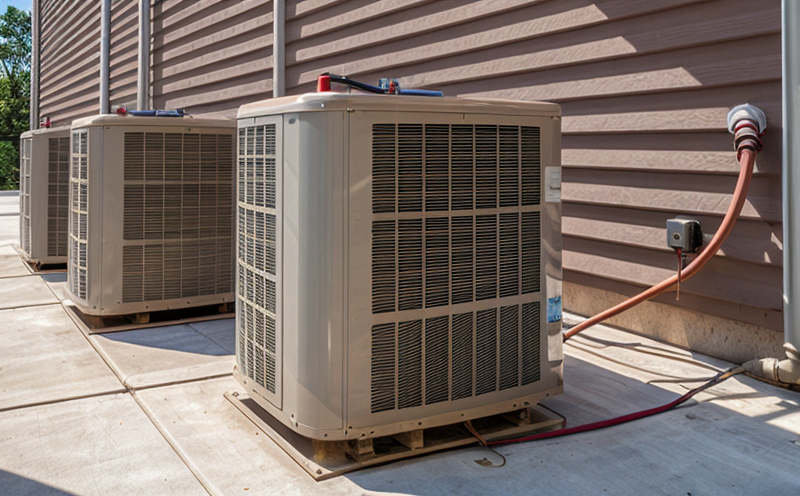ISO 16890 Air Filter Testing
The ISO 16890 standard is a comprehensive set of guidelines for air filtration systems in buildings, which ensures that the air entering and leaving a building meets specified quality standards. This standard addresses various aspects such as particle penetration, dust holding capacity (DHC), and pressure drop over time to ensure optimal indoor air quality.
In the context of HVAC & Building Systems Testing within the sector of Building & Infrastructure Testing, ISO 16890 plays a crucial role in ensuring that the filtration systems installed meet specific performance criteria. The standard is particularly relevant for those involved in quality management, compliance officers, R&D engineers, and procurement teams who are responsible for selecting and validating air filter products.
The testing process involves several key steps: sample preparation, measurement of particle penetration, determination of dust holding capacity, and evaluation of pressure drop. These parameters are critical for ensuring that the filters perform as expected under real-world conditions. The standard also provides guidance on how to select appropriate filters based on the specific needs of different environments.
The ISO 16890 testing process is designed to be rigorous, with a focus on accuracy and repeatability. This ensures that the results obtained are reliable and can be used to make informed decisions about filter selection and installation. The standard also emphasizes the importance of ongoing monitoring and maintenance of filtration systems to ensure long-term performance.
By adhering to ISO 16890, organizations can demonstrate their commitment to sustainability and environmental responsibility by ensuring that they are using high-efficiency filters that reduce energy consumption and improve indoor air quality. This is particularly important in buildings with large footprints where the impact of poor air filtration can be significant.
The standard also provides a framework for continuous improvement, allowing organizations to refine their filter selection processes over time as new technologies become available. This ensures that they remain at the forefront of best practices and comply with international standards.
In summary, ISO 16890 air filter testing is an essential tool for ensuring optimal indoor air quality in buildings. By following this standard, organizations can ensure that their filtration systems are performing as expected and contributing to a healthier indoor environment. This not only benefits the occupants of the building but also supports wider sustainability goals.
| Application | Description |
|---|---|
| Data Centers | Ensuring reliable operation of sensitive equipment. |
| Hospitals and Clinics | Maintaining sterile conditions in critical areas. |
| Offices and Commercial Buildings | Promoting productivity through improved air quality. |
| Schools and Universities | Supporting healthy learning environments. |
| Residential Housing | Enhancing comfort and reducing allergens in homes. |
| Manufacturing Facilities | Protecting sensitive equipment from dust contamination. |
| Retail Spaces | Maintaining customer satisfaction through clean air. |





